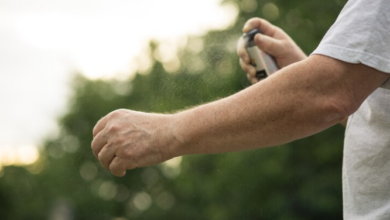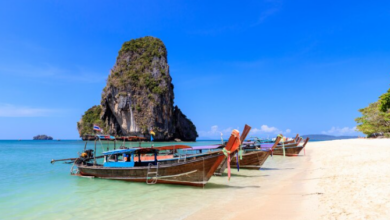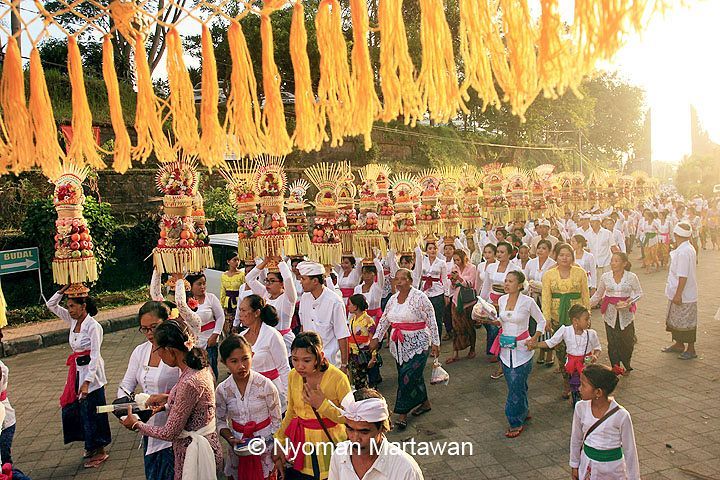
Culture and Art unite in a Belief, Balinese Hinduism
Table of Contents
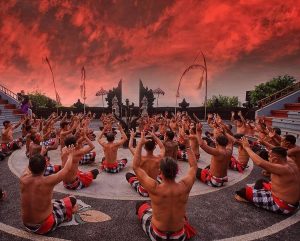
Balinese – Visa4Bali
As one of the main tourism destinations in Indonesia, Bali is not only famous for its tourism but also for its culture and traditions.
The culture that gave birth to several traditions is very attached to the community. Where are the culture and traditions of Balinese Hinduism, which contain art and rituals?
Balinese Hindu Religion
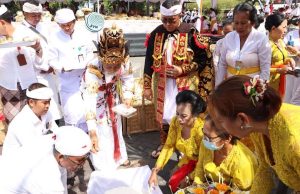
Balinese Hinduism recognizes three worshiped Gods, which are also called Trimurti, namely Lord Brahma, Lord Vishnu, and Lord Shiva.
Balinese Hinduism, also known as Dharma Hinduism or Tirtha religion (Holy Water religion), is a Hindu religious practice practiced by the majority of Balinese in Indonesia.
His worship is closely related to art and ritual. The Hindu community in Bali places great emphasis on dramatic and aesthetic peace rituals for the “Hyangs.” These rituals are carried out at temples and temple sites scattered throughout villages in Bali.
Each of the statues that are placed in each temple will be different because they are in accordance with the gods that the Balinese Hindu community worships.
Balinese Hinduism believes that all gods are one, only with different names. Its adherents also consider Hinduism to be the mother of all religions and cultures.
Balinese Culture Results
Bali has various cultural and traditional products, such as traditional houses, traditional clothes, traditional dances, traditional musical instruments, traditional ceremonies, and traditional nuanced buildings.
Culture and art become one with religion
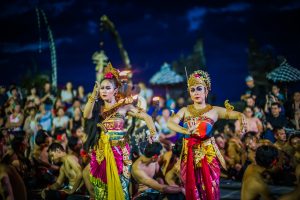
Take one example of the results of this culture and tradition: dance, dancing to the accompaniment of gamelan music is a community activity that is not only an expression of art and culture but also supports the religious activities of the Balinese people.
Because dance is also an offering, it is the highest form of respect for the Creator.
There are three types of Balinese dance: wali (sacred), bebali (ceremony), and balih-balihan (entertainment). The guardian and bebali dances are performed at a certain place and time.
The wali dance, for example, is performed in the inner courtyard of the temple, while the bebali dance is performed in the central courtyard. Meanwhile, the Balih-Balihan dance is performed in the courtyard outside the temple as part of an entertainment program.
Various kinds of culture and traditions in Bali are closely related to religious ceremonies
A number of unique traditions are presented as an art piece. Until now, this culture and tradition have been highly preserved and related to people’s beliefs in rituals or processions wrapped in a tradition.
Nyepi Day

Nyepi Day is a Hindu religious holiday in Bali. Nyepi Day has been designated as one of the major holidays in Indonesia.
This holiday is held once a year to welcome Isaka’s new year, which falls on the dead moon (Tilem) of Sasih Kesanga (the ninth month).
A different welcome for the New Year, namely with silence, calm, quiet, and loneliness, is why all residents during Nyepi are not allowed to go out, light a fire, make noise, or have fun.
Ngaben Ceremony
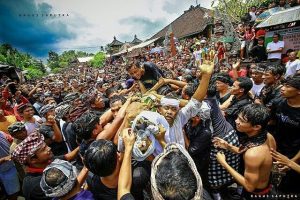
The majority of Hindus on the island of Bali perform the Ngaben ceremony when people die. The Ngaben ceremony is a form of human devotion and sacred obligation to their ancestors or people who have died.
During the Ngaben ceremony, the body of the deceased can be buried first or cremated directly.
However, not all areas in Bali carry out Ngaben, this can be seen in the Bali Aga population, for example, in the villages of Tenganan and Trunyan.
Melasti Ceremony
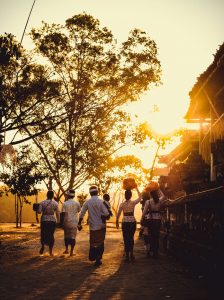
Melasti is known as mekiis or melis in places where water sources such as seas, lakes, or springs exist. However, Melasti, or Melis, on the island of Bali is held simultaneously once a year, 3-4 days before Nyepi around March.
During Melasti, all the pratima, nawa sanga weapons, banners, and kober are paraded to a water source such as the sea to be purified and washed away all the earth’s filth or dirt, which is also meant to wash away all human suffering through the water of life.
Then proceed with the procession of purifying oneself with angamet (taking) tirta amertha, to get the essence of life. These cultures and traditions are the cultural heritage of Balinese ancestors and are well preserved to this day.
Ogoh-Ogoh parade

Ogoh-ogoh is a giant doll that is a symbol of Bhuta Kala, made in a scary form or as a symbol of evil, the most dominant being in the form of a scary giant, animal, or even criminal.
The procession of the ogoh-ogoh parade is still in the series of implementations of Nyepi Day, after previously the Tawur Kesanga gave wages to Bhuta Kala, then in the evening they were expelled and paraded around in the form of a parade.
This is done so as not to disturb human life anymore, especially the next day when carrying out Nyepi.
Omed – Omedan Tradition
The cultural and traditional procession this time is so unique because it is only attended by young people, or those who are not married, with a minimum age of 13 years.
This unique culture and tradition are held in the center of Denpasar, precisely at Banjar Kaja, Sesetan Village, South Denpasar.
Omed-omedan means “tug of war” between young men and women of Banjar residents, and sometimes it is accompanied by a kissing scene between the two.
This tradition is held as a form of joy after the implementation of Nyepi Day, which has sacred values and is believed to experience bad things if this tradition is not carried out.
Not infrequently, the arts and traditional activities above are also a presentation of art for tourists. When you see the traditions that are being carried out, always pay attention to politeness.
The Best Visa Agency in Bali – www.visa4bali.com
Experienced specialists managing the entire application process from start to finish !



